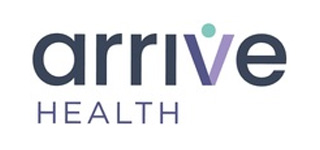Olive combines computer vision and deep learning to handle repetitive tasks like preapproval for surgery and other healthcare procedures.
Imagine a co-worker who takes over the most boring parts of your job, follows instructions perfectly, and gets smarter over time. A Columbus company is using computer vision and robotic process automation to create just that type of employee for hospitals. Olive is both the “digital employee” designed for repetitive administrative tasks and the company that built the service.
Olive is now “working” in more than 500 US hospitals in 41 states. CEO Sean Lane said the software robot is designed to work in several departments, including revenue cycle, information technology, clinical administration, and human resources. Lane said Olive uses computer vision, robotic process automation, machine learning, and deep learning to take in data, understand it, and then take action.
“She’s looking for information she needs to complete the job or to provide additional information to a human,” Lane said.
Olive uses computer vision to collect that information by reading it off the screen and searching in documents.
“She navigates a webpage the same way a human would,” Lane said.
Lane said Olive starts a new job by processing tens of thousands of rows of data a day and progresses over time to hundreds of thousands of rows per day per customer.
Olive has a standard set of skills that customers can use out of the box. As Olive gains on-the-job experience with a customer, the robot’s human colleagues look for additional processes that can be automated.
Lane said that the inspiration for the company was a lack of intraoperatively among the multiple platforms that a hospital’s billing department uses.
“Instead of trying to get them to share, we decided to build a software robot that could access the data,” he said. “I knew that these administrative tasks were burdensome but I couldn’t have begun to guess how many there actually were.”
Lane said that Olive customers pay a monthly subscription every month to keep the digital employee on staff, what he calls AI-as-a-service.
The next phase for his company is to allow the Olives working in healthcare systems across the country to communicate with each other to create an internet of healthcare.
“Each Olive is a node on the network so potentially at some point, an Olive in Georgia could talk to an Olive in Michigan,” he said.
The company calls Olive’s brain Deep Purple and a terabyte of data is added every day to that collective data store. As the software robot completes her work, she collects and stores information about each task. Deep Purple gathers this contextual information in one place to find new connections and automation opportunities.
Automating repetitive tasks
As the coronavirus outbreak changes workplaces around the world, companies in all industries will put a new focus on automation as a way to cope. As one example, an RPA company helped one of Israel’s largest healthcare providers automate downloads of COVID-19 test results directly from the Israeli Ministry of Health into the healthcare system.
Connecticut’s largest healthcare system has also automated repetitive tasks to reduce the overall workload. Sharlene Seidman is the vice president of patient financial services at Yale New Haven Health. Seidman oversees revenue cycle management, which includes back office work such as preauthorizations, insurance claims, and patient billing as well as patient-facing jobs such as scheduling and check-ins. Her team of 1,400 people collects almost $5 billion per year in revenue.
She started researching artificial intelligence and robotic process automation several years ago to reduce the number of repetitive tasks that her staff has to do on daily. She said it took some time to convince the hospital leadership team to make the investment.
Seidman chose to hire Olive for two reasons: There was a good match between the values of the vendor and the hospital and because the vendor understood how healthcare operations work. After selecting Olive as a tech partner, Seidman turned to automating the prior authorization workflow, a highly transactional process.
“We are looking to reduce the amount of time that we spend submitting the request and checking the status because we don’t get immediate approval, we have to go back and keep checking,” she said.
This frees up staff time to address rejected requests and to calculate the patient part of the bill, Seidman said. The approval process includes collecting data about a patient’s medical history and in some cases a doctor review of the request to determine if it is medically necessary.
Seidman’s team has its own internal IT team to help with process mapping and operational tasks, including establishing VPN connections, transaction messages, file exports, and permissions.
Seidman said that since her department started automating tasks, she has not laid off any employees.
“What this has done is allowed us to keep the staff that we have but take on additional volume,” she said.
She said that she has deliberately involved staff members in the automation projects to build trust and address any job security concerns.
“We’ve made the cultural investment in the process very important,” she said. “Our people are just as important as the technology and the work processes.”



